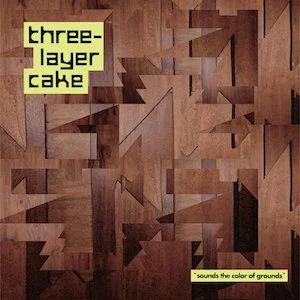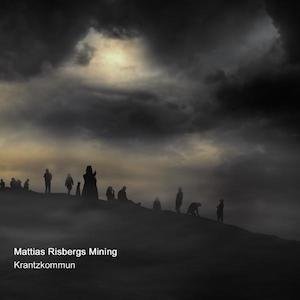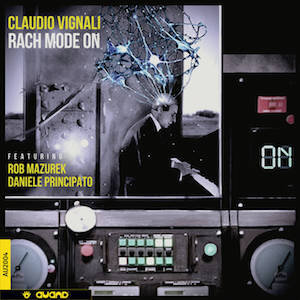Label: Otherly Love Records, 2025
Personnel - Brandon Seabrook: guitars, banjos, tapes; Mike Watt: electric bass, vocals; Mike Pride: drumset, marimba, glockenspiel, dumbeks, bongos, organ; Jonathan Moritz: tenor saxophone (#8).
Sounds the Color of Grounds, the sophomore album by the progressive trio Three-Layer Cake, is full of surprises, oozing a rebellious sense of freedom and energy that is unmistakably the group’s own. The trio consists of adventurous guitarist/banjoist Brandon Seabrook, bassist Mike Watt, and drummer Mike Pride. The group made its debut in 2021 with Stove Top (RareNoise), recorded remotely as an incendiary response to the pandemic. This new album follows the same approach—with the curious detail that Watt, who lives in California, has never met Seabrook or Pride in person. They plan to get together soon at Pride’s studio in Chester, NY, to record their upcoming third album.
“Deliverdance” channels the punk rock spirit of Minutemen—Watt’s former band—but adds complex banjo ornamentation atop the muscular bass and drum texture. Watt’s spoken word here and on a couple other tracks were written for visual artist Raymond Pettibon, designer of the punk band Black Flag’s logo. “From Couplets to Crepuscles” unfolds with altered jazzy guitar chords, loose bass lines turned methodical, steady rhythmic steps, and effervescent drumming.
Pride drums with jaunty mischief on “The Hasta Cloth”, a piece firmly grounded in a bass groove, featuring bold guitar incursions and tinged with funk-rock and New Wave influences. Another lever fusion of funk, rock, and reggae is on display in “Tchotchkes”, where Seabrook adds unexpected crunch to the rhythmic architecture. The sound evokes Marc Ribot and The Lounge Lizards.
In an album that embodies the passion and fire of creative rockers, there’s space for a brushed, groovy jazz piece - and yet “Occluded Ostracized and Onanistic” is delightfully warped by eccentric melodies. “What Was Cut From the Negative Space” begins as a downtempo journey—thanks to Pride’s irresistible rhythm— before evolving into noise-rock territory with fusion hints, having Seabrook’s banjo attacks and distorted guitar simultaneously woven into cathartic ferocity. Studio overdubs were handled by Pride, whose inexorable tom-tom rumbling on “Lickspittle Spatter” perfectly accommodates the Oriental flavors emanated from Seabrook’s bowed banjo. There’s also funk and electronic music influence here.
Moving through pitches and timbres with passionate drive, Three-Layer Cake has crafted an uplifting, hooky-filled album that forges a distinctive style by distilling the best of its eclectic influences.
Favorite Tracks:
02 - From Couplets to Corpuscles ► 04 - What Was Cut From the Negative Space ► 07 - Tchotchkes
































